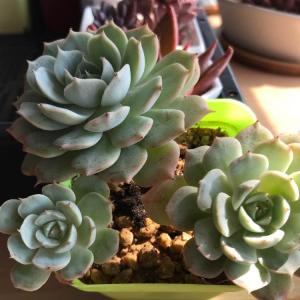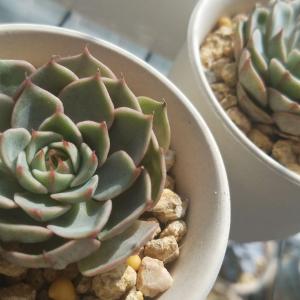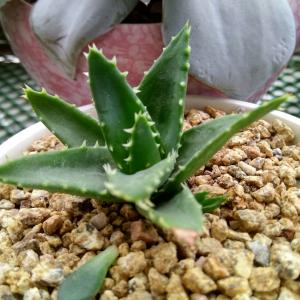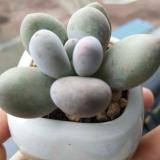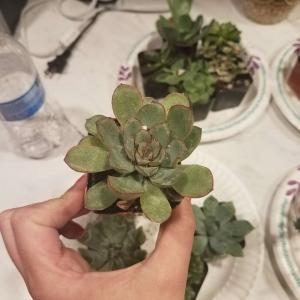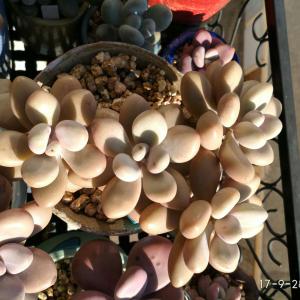文章
Miss Chen
2017年10月30日

Muscadine grapes have shallow roots that feed upon nutrients within the top 12 inches of the soil. Correct application of nutrients is important. The type and schedule of fertilization depends largely upon the existing conditions of the soil and age of the muscadine grape. Before planting vegetation, perform a soil test, which will inform you of the soil pH and the nutrient status of your site.

First Year Fertilization
Provide 1/4 to 1/2 lb. of a complete fertilizer, such as 10-10-10 or 12-12-12, to each muscadine grape vine during April of the first growing season. Apply in a wide band, 1 to 2 feet in diameter, making sure to encompass all of the plant roots. Repeat this process with reapplications in July and in early August. Allow approximately six weeks to elapse between fertilizer applications.
Fertilization - Second Year and Beyond
Provide the same type of fertilizer to second-year muscadine grape vines, but double the amount to 1/2 to 1 lb. per vine. Provide two applications total in early March and June or July. In future years, continue to fertilize on this time schedule, but increase rates to 2 to 3 lbs. of fertilizer per vine. As the plant matures, increase the broadcast range of fertilization to a 6-foot diameter. Expect muscadine grapes to grow an average of 30 to 36 inches per year. Increase nitrogen if less growth occurs, cut back on nitrogen if more growth takes place.
Magnesium
Muscadine grapes benefit from periodic applications of micronutrients. In particular, muscadine grapes have a high magnesium requirement. Indications of magnesium deficiency include leaf yellowing and premature fruiting. To prevent or fix this problem in one- or two-year-old vines, evenly distribute 2 to 4 oz. of Epson salt over a 3- to 6-foot radius around each vine. Provide 4 to 6 oz. of Epson salt, in the same manner, to mature muscadine vines. If possible, apply to plants in July.

Boron
Boron is considered the second most important micronutrient. A shortage of boron, which is fairly common in soils with a high pH, will cause underdeveloped or deformed grapes. Two tablespoons of borax mixed into fertilizer is enough to treat a 400 square foot area. Apply no more frequently than every two to three years just prior to blooming. Avoid excessive application of boron. Too much of this nutrient is toxic to muscadine grapes.

First Year Fertilization
Provide 1/4 to 1/2 lb. of a complete fertilizer, such as 10-10-10 or 12-12-12, to each muscadine grape vine during April of the first growing season. Apply in a wide band, 1 to 2 feet in diameter, making sure to encompass all of the plant roots. Repeat this process with reapplications in July and in early August. Allow approximately six weeks to elapse between fertilizer applications.
Fertilization - Second Year and Beyond
Provide the same type of fertilizer to second-year muscadine grape vines, but double the amount to 1/2 to 1 lb. per vine. Provide two applications total in early March and June or July. In future years, continue to fertilize on this time schedule, but increase rates to 2 to 3 lbs. of fertilizer per vine. As the plant matures, increase the broadcast range of fertilization to a 6-foot diameter. Expect muscadine grapes to grow an average of 30 to 36 inches per year. Increase nitrogen if less growth occurs, cut back on nitrogen if more growth takes place.
Magnesium
Muscadine grapes benefit from periodic applications of micronutrients. In particular, muscadine grapes have a high magnesium requirement. Indications of magnesium deficiency include leaf yellowing and premature fruiting. To prevent or fix this problem in one- or two-year-old vines, evenly distribute 2 to 4 oz. of Epson salt over a 3- to 6-foot radius around each vine. Provide 4 to 6 oz. of Epson salt, in the same manner, to mature muscadine vines. If possible, apply to plants in July.

Boron
Boron is considered the second most important micronutrient. A shortage of boron, which is fairly common in soils with a high pH, will cause underdeveloped or deformed grapes. Two tablespoons of borax mixed into fertilizer is enough to treat a 400 square foot area. Apply no more frequently than every two to three years just prior to blooming. Avoid excessive application of boron. Too much of this nutrient is toxic to muscadine grapes.
0
0
文章
Miss Chen
2017年10月05日

El Aromo es un árbol que pertenece a la familia de las Leguminosas, género Acacia, especie dealbata.

Sus principales características son:
Altura: de 8 a 12 metros.
Diámetro: de 5 a 10 metros.
Crecimiento: rápido.
Suelo: bien drenado.
Temperatura: resiste bien el frio.
Transplante: mala tolerancia.
Usos: ornamental y forestal.
Origen: sudeste de Australia.

Es un árbol de porte mediano, copa globosa y rápido crecimiento.
Sus hojas perennes, de color verde claro, están compuestas de folíolos tan pequeños que parecen plumas.
El interés del árbol radica, principalmente, en sus flores amarillas que aparecen durante el invierno como cubriendo la copa de pequeños pompones con un perfume característico.

El aromo prefiere los suelos bien drenados o arenosos y silíceos. Debido a que sus raíces son muy superficiales, pueden tumbarse con los vientos fuertes.
Por tratarse de una especie que no soporta el transplante, es aconsejable comprarlo envasado.
Se reproduce por semillas y el tipo de plantación varía según las especies. Las mismas las veremos en otro post.

Sus principales características son:
Altura: de 8 a 12 metros.
Diámetro: de 5 a 10 metros.
Crecimiento: rápido.
Suelo: bien drenado.
Temperatura: resiste bien el frio.
Transplante: mala tolerancia.
Usos: ornamental y forestal.
Origen: sudeste de Australia.

Es un árbol de porte mediano, copa globosa y rápido crecimiento.
Sus hojas perennes, de color verde claro, están compuestas de folíolos tan pequeños que parecen plumas.
El interés del árbol radica, principalmente, en sus flores amarillas que aparecen durante el invierno como cubriendo la copa de pequeños pompones con un perfume característico.

El aromo prefiere los suelos bien drenados o arenosos y silíceos. Debido a que sus raíces son muy superficiales, pueden tumbarse con los vientos fuertes.
Por tratarse de una especie que no soporta el transplante, es aconsejable comprarlo envasado.
Se reproduce por semillas y el tipo de plantación varía según las especies. Las mismas las veremos en otro post.
1
0
文章
Miss Chen
2017年10月05日

La Acacia de Constantinopla es un árbol que pertenece a la familia Leguminosas, género Albizia, especie julibrissin.

Sus principales características son:
Altura: 8 a 10 metros.
Diámetro: 8 a 12 metros.
Crecimiento: mediano.
Suelo: bien drenado.
Temperatura: resiste medianamente el frío.
Transplante: tolerancia mediana.
Usos: ornamental y forestal.
Origen: Persia.

Es un árbol de porte mediano.
Su follaje, de color verde claro, es caduco. En el invierno adopta una silueta particular, ya que sus ramas sin hojas sólo presentan las vainas aplanadas que han dejado a su paso las flores. Estas aparecen como plumeritos de color rosado claro, muy perfumadas, a fines de la primavera.

Esta planta crece con rapidez y no es muy longeva. El interés de este árbol radica en su copa aparasolada, una característica que lo vuelve ideal para estacionamientos o sectores cercanos a las casas, y su sombra ligera.

Si bien su cultivo no presenta problemas, lo ideal es plantarlo a pleno sol y en suelos sueltos, bien drenados, aunque no sean muy ricos.
Se cultiva como especie ornamental y se reproduce por semillas.
Es importante tutorarlo desde joven, ya que su tronco tiende a curvarse. Por su forma y tamaño, resulta ideal para veredas y jardines pequeños.

Sus principales características son:
Altura: 8 a 10 metros.
Diámetro: 8 a 12 metros.
Crecimiento: mediano.
Suelo: bien drenado.
Temperatura: resiste medianamente el frío.
Transplante: tolerancia mediana.
Usos: ornamental y forestal.
Origen: Persia.

Es un árbol de porte mediano.
Su follaje, de color verde claro, es caduco. En el invierno adopta una silueta particular, ya que sus ramas sin hojas sólo presentan las vainas aplanadas que han dejado a su paso las flores. Estas aparecen como plumeritos de color rosado claro, muy perfumadas, a fines de la primavera.

Esta planta crece con rapidez y no es muy longeva. El interés de este árbol radica en su copa aparasolada, una característica que lo vuelve ideal para estacionamientos o sectores cercanos a las casas, y su sombra ligera.

Si bien su cultivo no presenta problemas, lo ideal es plantarlo a pleno sol y en suelos sueltos, bien drenados, aunque no sean muy ricos.
Se cultiva como especie ornamental y se reproduce por semillas.
Es importante tutorarlo desde joven, ya que su tronco tiende a curvarse. Por su forma y tamaño, resulta ideal para veredas y jardines pequeños.
0
0
文章
Dummer. ゛☀
2017年10月02日

The Agave lechuguilla (Lechuguilla) is the smallest Agave growing in the Trans-Pecos area of the Chihuahuan Desert. Its leaves are usually less than an inch wide and the plant ranges from 12 to 18 inches in height. Though sometimes listed as an indicator species of the Chihuahuan, that is not strictly the case, as this plant can also be found in the Sonoran and Coahuilan deserts as well. It is the dominant plant species on over 38,000 square miles of calcareous soils that are of little use for anything else.

Lechuguilla frequently grows in almost impenetrable thickets, and its stiff, inwardly curved spines are capable of piercing skin, leather, and even off-road vehicle tires. If you’ve ever stepped in one you understand first-hand how the curvature of the spine helps it dig deep into your calf; how its backwardly aimed side spines make it difficult to get free, and how its deep puncture wounds hurt like the dickens and can take months to heal. These spines can cripple a horse and severely injure any human who happens to fall upon it. If there is one plant in the Chihuahuan desert to avoid, this is it.
But Lechuguilla is not all bad. Like its other Agave brethren, it stays green year round. When it’s old enough it sends up a flower stalk that rises 10 to 15 feet; it is covered with lovely wine and yellow colored flowers.
Since the flowering stalk is so tall, you may spend quite a bit of time visiting the Chihuahuan Desert without seeing the small flowers which create this display.
Lechuguilla, as much as any other plant in the Trans Pecos, gives our area the look that tells us this is home. When it is in bloom Lechuguilla hosts countless pollinating insects, including the Cohuila Giant Skipper that is entirely dependent on this plant. After flowering, the remaining stalk is one of the few viable alternatives to wood to be found in the Chihuahuan desert.

Lechuguilla has been used for food, drink, and fiber for over 10,000 years. The toxic juices have been used as an arrow poison, a fish stupefier, a medicine, and a soap. Aztecs made a powerful antibiotic from a mixture of Lechuguilla juice and salt and used it as a dressing for wounds and a balm for skin infections. The Mescalero Apaches baked the central stems in pits and then rolled out the pulp, dried it and stored it as a sort of sweat bread. They also fermented the pulp to make an alcoholic drink that is made today and sold in Mexico as “Clandestino”. The water stored in the leaves is rich in salts and minerals and is sold as a sports drink.

People have always valued lechuguilla for its fiber. Its leaves are so thick with fiber that it is difficult to see how the plant stores anything else inside. The fibers are long, tough, resilient, strong, and extremely durable. Native Americans fashioned lechuguilla fibers into sandals, baskets, nets, rugs, cordage and a wide range of other products. Lechuguilla sandals have been recovered from numerous rock shelters in the eastern Trans-Pecos.

Lechuguilla frequently grows in almost impenetrable thickets, and its stiff, inwardly curved spines are capable of piercing skin, leather, and even off-road vehicle tires. If you’ve ever stepped in one you understand first-hand how the curvature of the spine helps it dig deep into your calf; how its backwardly aimed side spines make it difficult to get free, and how its deep puncture wounds hurt like the dickens and can take months to heal. These spines can cripple a horse and severely injure any human who happens to fall upon it. If there is one plant in the Chihuahuan desert to avoid, this is it.
But Lechuguilla is not all bad. Like its other Agave brethren, it stays green year round. When it’s old enough it sends up a flower stalk that rises 10 to 15 feet; it is covered with lovely wine and yellow colored flowers.
Since the flowering stalk is so tall, you may spend quite a bit of time visiting the Chihuahuan Desert without seeing the small flowers which create this display.
Lechuguilla, as much as any other plant in the Trans Pecos, gives our area the look that tells us this is home. When it is in bloom Lechuguilla hosts countless pollinating insects, including the Cohuila Giant Skipper that is entirely dependent on this plant. After flowering, the remaining stalk is one of the few viable alternatives to wood to be found in the Chihuahuan desert.

Lechuguilla has been used for food, drink, and fiber for over 10,000 years. The toxic juices have been used as an arrow poison, a fish stupefier, a medicine, and a soap. Aztecs made a powerful antibiotic from a mixture of Lechuguilla juice and salt and used it as a dressing for wounds and a balm for skin infections. The Mescalero Apaches baked the central stems in pits and then rolled out the pulp, dried it and stored it as a sort of sweat bread. They also fermented the pulp to make an alcoholic drink that is made today and sold in Mexico as “Clandestino”. The water stored in the leaves is rich in salts and minerals and is sold as a sports drink.

People have always valued lechuguilla for its fiber. Its leaves are so thick with fiber that it is difficult to see how the plant stores anything else inside. The fibers are long, tough, resilient, strong, and extremely durable. Native Americans fashioned lechuguilla fibers into sandals, baskets, nets, rugs, cordage and a wide range of other products. Lechuguilla sandals have been recovered from numerous rock shelters in the eastern Trans-Pecos.
0
0
文章
Dummer. ゛☀
2017年10月01日

The Agave lechuguilla (Lechuguilla) is the smallest Agave growing in the Trans-Pecos area of the Chihuahuan Desert. Its leaves are usually less than an inch wide and the plant ranges from 12 to 18 inches in height. Though sometimes listed as an indicator species of the Chihuahuan, that is not strictly the case, as this plant can also be found in the Sonoran and Coahuilan deserts as well. It is the dominant plant species on over 38,000 square miles of calcareous soils that are of little use for anything else.
Lechuguilla frequently grows in almost impenetrable thickets, and its stiff, inwardly curved spines are capable of piercing skin, leather, and even off-road vehicle tires. If you’ve ever stepped in one you understand first-hand how the curvature of the spine helps it dig deep into your calf; how its backwardly aimed side spines make it difficult to get free, and how its deep puncture wounds hurt like the dickens and can take months to heal. These spines can cripple a horse and severely injure any human who happens to fall upon it. If there is one plant in the Chihuahuan desert to avoid, this is it.
But Lechuguilla is not all bad. Like its other Agave brethren, it stays green year round. When it’s old enough it sends up a flower stalk that rises 10 to 15 feet; it is covered with lovely wine and yellow colored flowers.
Since the flowering stalk is so tall, you may spend quite a bit of time visiting the Chihuahuan Desert without seeing the small flowers which create this display.
Lechuguilla, as much as any other plant in the Trans Pecos, gives our area the look that tells us this is home. When it is in bloom Lechuguilla hosts countless pollinating insects, including the Cohuila Giant Skipper that is entirely dependent on this plant. After flowering, the remaining stalk is one of the few viable alternatives to wood to be found in the Chihuahuan desert.
Lechuguilla has been used for food, drink, and fiber for over 10,000 years. The toxic juices have been used as an arrow poison, a fish stupefier, a medicine, and a soap. Aztecs made a powerful antibiotic from a mixture of Lechuguilla juice and salt and used it as a dressing for wounds and a balm for skin infections. The Mescalero Apaches baked the central stems in pits and then rolled out the pulp, dried it and stored it as a sort of sweat bread. They also fermented the pulp to make an alcoholic drink that is made today and sold in Mexico as “Clandestino”. The water stored in the leaves is rich in salts and minerals and is sold as a sports drink.
People have always valued lechuguilla for its fiber. Its leaves are so thick with fiber that it is difficult to see how the plant stores anything else inside. The fibers are long, tough, resilient, strong, and extremely durable. Native Americans fashioned lechuguilla fibers into sandals, baskets, nets, rugs, cordage and a wide range of other products. Lechuguilla sandals have been recovered from numerous rock shelters in the eastern Trans-Pecos.

Lechuguilla frequently grows in almost impenetrable thickets, and its stiff, inwardly curved spines are capable of piercing skin, leather, and even off-road vehicle tires. If you’ve ever stepped in one you understand first-hand how the curvature of the spine helps it dig deep into your calf; how its backwardly aimed side spines make it difficult to get free, and how its deep puncture wounds hurt like the dickens and can take months to heal. These spines can cripple a horse and severely injure any human who happens to fall upon it. If there is one plant in the Chihuahuan desert to avoid, this is it.

But Lechuguilla is not all bad. Like its other Agave brethren, it stays green year round. When it’s old enough it sends up a flower stalk that rises 10 to 15 feet; it is covered with lovely wine and yellow colored flowers.
Since the flowering stalk is so tall, you may spend quite a bit of time visiting the Chihuahuan Desert without seeing the small flowers which create this display.
Lechuguilla, as much as any other plant in the Trans Pecos, gives our area the look that tells us this is home. When it is in bloom Lechuguilla hosts countless pollinating insects, including the Cohuila Giant Skipper that is entirely dependent on this plant. After flowering, the remaining stalk is one of the few viable alternatives to wood to be found in the Chihuahuan desert.

Lechuguilla has been used for food, drink, and fiber for over 10,000 years. The toxic juices have been used as an arrow poison, a fish stupefier, a medicine, and a soap. Aztecs made a powerful antibiotic from a mixture of Lechuguilla juice and salt and used it as a dressing for wounds and a balm for skin infections. The Mescalero Apaches baked the central stems in pits and then rolled out the pulp, dried it and stored it as a sort of sweat bread. They also fermented the pulp to make an alcoholic drink that is made today and sold in Mexico as “Clandestino”. The water stored in the leaves is rich in salts and minerals and is sold as a sports drink.

People have always valued lechuguilla for its fiber. Its leaves are so thick with fiber that it is difficult to see how the plant stores anything else inside. The fibers are long, tough, resilient, strong, and extremely durable. Native Americans fashioned lechuguilla fibers into sandals, baskets, nets, rugs, cordage and a wide range of other products. Lechuguilla sandals have been recovered from numerous rock shelters in the eastern Trans-Pecos.
0
0



